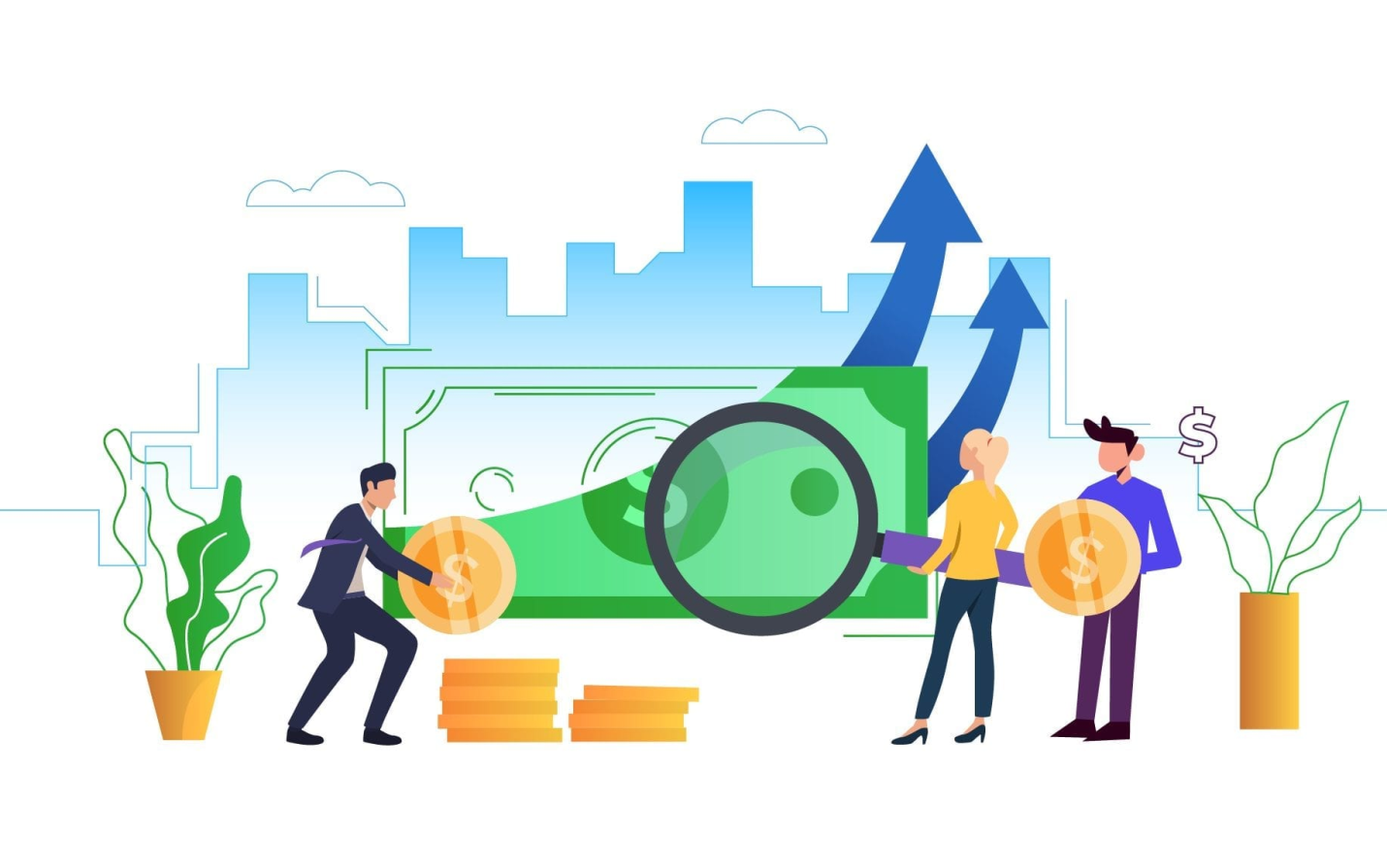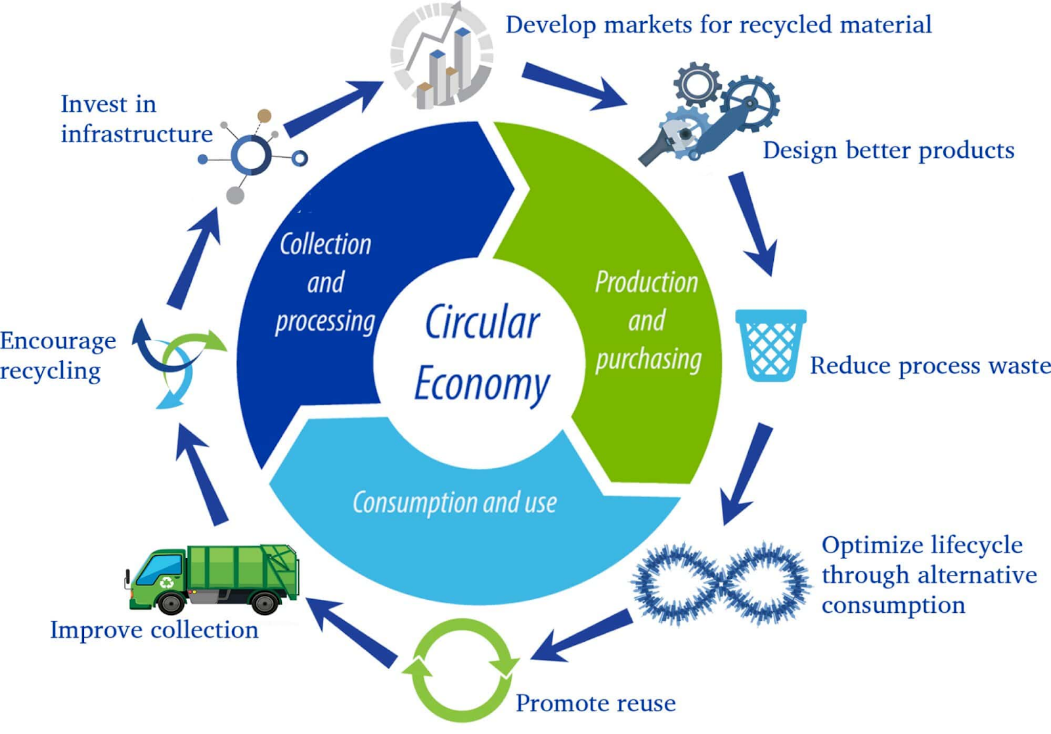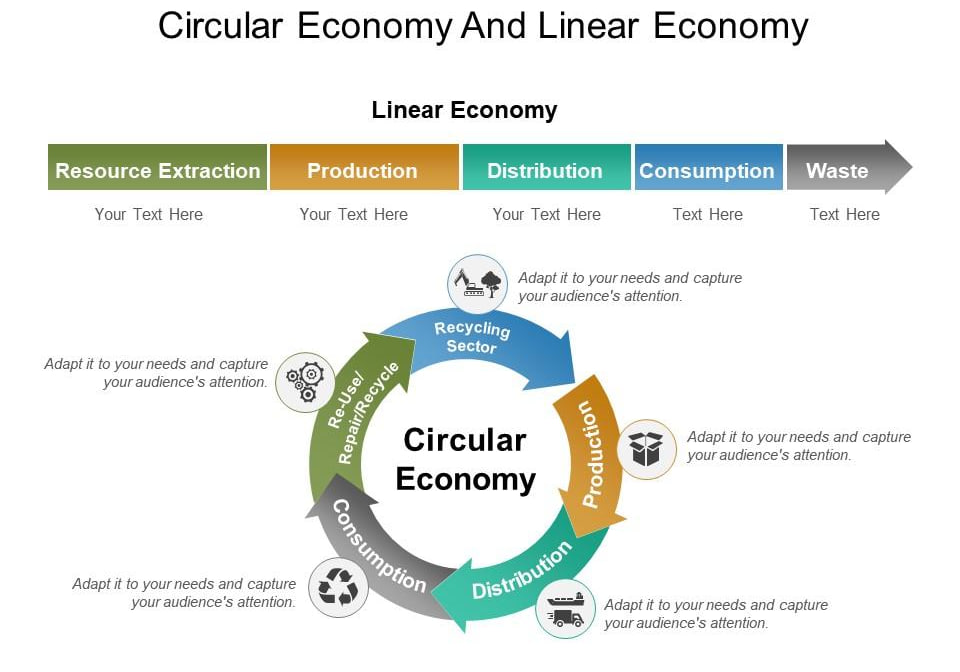
Copyright infringement not intended
Context: ‘Take-make-dispose’ model can create a more resilient, inclusive, and circular economy that benefits both people and the planet.
Details
- The ‘take-make-dispose’ model of production and consumption has dominated the global economy for decades. It is based on the assumption that resources are abundant and cheap, and that waste can be easily disposed of without harming the environment. However, this model is unsustainable and inefficient, as it generates huge amounts of waste, pollution and greenhouse gas emissions while depleting natural resources and biodiversity.
- A circular economy is an alternative model that aims to eliminate waste and keep resources in use for as long as possible. It is based on three principles: design out waste and pollution, keep products and materials in use, and regenerate natural systems.
What is the circular economy and why is it important?
- The circular economy is a system of production and consumption that aims to minimize waste and maximize value. It is an alternative to the linear ‘take-make-dispose’ model that dominates our current economy.
- In the linear model, we extract natural resources, use them to make products, and then throw them away when they are no longer useful. This creates a lot of environmental and social problems, such as resource depletion, greenhouse gas emissions, pollution, biodiversity loss, and inequality.
- The circular economy offers a different way of thinking about how we create value and prosperity. It encourages designing products that are durable, repairable, reusable, and recyclable. It also promotes business models that extend the life of products, such as sharing, leasing, remanufacturing, and refurbishing. And it supports the restoration of natural capital, such as soil, water, and forests.
- A circular economy can bring multiple benefits to society, the environment, and the economy. It can help address some of the most pressing global challenges, such as climate change, biodiversity loss, resource scarcity, and social inequality. It can also create new opportunities for innovation, growth, and competitiveness.

How the circular economy differs from the 'take-make-dispose' model?
Resource Management
- In the 'take-make-dispose' model, resources are extracted, used to produce goods, and then discarded as waste. This leads to inefficient use of resources, depletion of natural capital, and increased pressure on the environment.
- The circular economy focuses on managing resources in a closed-loop system. It promotes strategies like recycling, reusing, remanufacturing, and refurbishing products to keep materials in circulation for as long as possible. This reduces the demand for new resources, preserves natural resources, and lowers environmental impact.
Waste Reduction
- The 'take-make-dispose' model generates large amounts of waste, leading to environmental pollution and resource depletion. According to the World Bank, global waste generation is expected to increase by 70% by 2050, posing serious challenges for waste management and disposal.
- In the circular economy, waste is minimized through various methods, such as designing products for longevity and ease of repair, encouraging consumers to share or lease products, and ensuring responsible end-of-life management to recover valuable materials. This reduces the amount of waste that ends up in landfills or incinerators and prevents the loss of valuable resources.
Product Design
- Circular economy principles drive sustainable product design. Products are designed with a focus on durability, repairability, and recyclability. Designers consider the entire lifecycle of products, from sourcing materials to their eventual disposal, to ensure minimal environmental impact. They also aim to reduce the use of harmful substances and materials that are difficult to recycle or reuse.
- By applying circular design principles, products can last longer, function better, and be easily repaired or recycled at the end of their useful life.

Economic Opportunities
- The circular economy presents economic opportunities by creating new industries and business models. The emphasis on repair, refurbishment, and recycling opens up avenues for job creation, innovation, and sustainable growth.
- According to a report by the Ellen MacArthur Foundation, adopting circular economy practices could generate $4.5 trillion of additional economic output by 2030. The circular economy also enhances competitiveness and resilience by reducing dependence on imported resources, lowering costs of production and consumption, and mitigating risks associated with resource scarcity and price volatility.
Energy Efficiency
- The circular economy encourages the efficient use of energy throughout the product lifecycle. It reduces energy consumption associated with the extraction, manufacturing, and transportation of resources, leading to lower carbon emissions. It also promotes the use of renewable energy sources and energy recovery technologies to power circular processes. By improving energy efficiency and reducing greenhouse gas emissions, the circular economy contributes to climate change mitigation and adaptation.
The circular economy is gaining traction globally as a sustainable alternative to the 'take-make-dispose' model. It offers the potential to address environmental challenges, create economic opportunities, and improve the overall well-being of society while safeguarding the planet for future generations.

How can we transition to the circular economy?
- The transition to the circular economy requires a systemic change that involves multiple actors and sectors. It is not something that can be achieved overnight or by one organization alone. It requires collaboration, coordination, and co-creation among governments, businesses, civil society, academia, and consumers.
Key enablers for the circular economy
Policy and regulation
- Governments can set the direction and create the enabling conditions for the circular economy through laws, standards, taxes, subsidies, public procurement, and other instruments. They can also align their policies with the circular economy principles and objectives, and monitor and evaluate their progress and impact.
Innovation and technology
- Businesses can develop and adopt new solutions that enable circularity, such as digital platforms, biotechnology, nanotechnology, and renewable energy. They can also redesign their products and services to make them more durable, repairable, reusable, recyclable, or biodegradable.
Education and Awareness
- Educators can equip students with the knowledge and skills to understand and apply the circular economy principles. They can also foster a culture of creativity, problem-solving, and systems thinking among learners. Consumers can also learn about the benefits of circular consumption patterns and behaviours, such as sharing, leasing, repairing, or composting.
Finance and investment
- Investors can support the scaling up of circular businesses and initiatives by providing access to capital, risk-sharing mechanisms, and impact measurement tools. They can also integrate circularity criteria into their investment decisions and portfolios, and promote transparency and disclosure of circular performance indicators.
Culture and mindset
- Society can embrace a shift in values and norms that favour sustainability, collaboration, diversity, and long-term thinking. They can also celebrate and reward circular achievements and role models, and engage in dialogue and co-creation with other stakeholders.
These enablers are not mutually exclusive or exhaustive. They are interrelated and interdependent, and they can reinforce each other in creating a positive feedback loop for the circular economy. By working together across these domains, we can accelerate the transition to a circular economy that benefits people, the planet, and profit.
Steps taken by India to promote circular economy
- Steps taken by India to promote a circular economy in various sectors, such as agriculture, energy, manufacturing, and urban development.
Agriculture: India is one of the largest producers and consumers of food in the world, but also faces significant food loss and waste along the supply chain. To reduce this, India has implemented several initiatives, such as:
- The Food Safety and Standards Authority of India (FSSAI) has launched a campaign called "Save Food Share Food Share Joy" to raise awareness and encourage donations of surplus food to the needy.
- The Ministry of Agriculture and Farmers Welfare has launched a scheme called "Pradhan Mantri Kisan Sampada Yojana" to create infrastructure for the processing, preservation, and transportation of agricultural produce.
- The Ministry of Agriculture & Farmers Welfare has launched a scheme called "Paramparagat Krishi Vikas Yojana" to promote organic farming and reduce the use of chemical fertilizers and pesticides.
- The Ministry of New and Renewable has launched a scheme called the "National Biogas and Manure Management Programme" to promote the use of biogas as a clean fuel and organic manure as a soil conditioner.
Energy: India is one of the fastest-growing economies in the world, but also faces a huge demand for energy and a dependence on fossil fuels. To transition to a low-carbon economy, India has taken several steps, such as:
- The Ministry of Power has launched a scheme called "Ujwal DISCOM Assurance Yojana" to improve the financial and operational efficiency of power distribution companies and reduce transmission losses.
- The Ministry of Petroleum and Natural Gas has launched a scheme called "Pradhan Mantri Ujjwala Yojana" to provide free LPG connections to poor households and reduce the use of firewood and kerosene.
- The Ministry of Coal has launched a scheme called "Coal Bed Methane Policy" to extract methane gas from coal seams and use it for power generation or industrial purposes.
Manufacturing: India is one of the largest manufacturing hubs in the world, but also faces challenges such as low productivity, high resource consumption, and environmental degradation. To foster a circular economy in manufacturing, India has taken several steps, such as:
- The Ministry of Commerce and Industry has launched a scheme called "Make in India" to boost domestic manufacturing and attract foreign investment.
- The Ministry of Micro, Small and Medium Enterprises has launched a scheme called "Zero Defect Zero Effect" to encourage quality production and minimize environmental impact.
- The Ministry of Electronics and Information Technology has launched a scheme called "National Policy on Electronics" to promote the development of electronic products and components in the country.
- The Ministry of Environment, Forest and Climate Change has launched a scheme called "Extended Producer Responsibility" to make producers responsible for collecting and recycling their products after their end-of-life.
Urban Development: India is one of the most urbanized countries in the world, but also faces issues such as congestion, pollution, waste management, and slum development. To create sustainable cities, India has taken several steps, such as:
- The Ministry of Housing and Urban Affairs has launched a scheme called "Smart Cities Mission" to develop 100 cities with smart solutions for urban governance, mobility, energy, water, waste, etc.
- The Ministry of Housing and Urban Affairs has launched a scheme called "Swachh Bharat Mission" to achieve universal sanitation coverage and eliminate open defecation in urban areas.
- The Ministry of Housing and Urban Affairs has launched a scheme called "Atal Mission for Rejuvenation and Urban Transformation" to improve the quality of basic services such as water supply, sewerage, drainage, etc. in urban areas.
- The Ministry of Housing and Urban Affairs has launched a scheme called "Pradhan Mantri Awas Yojana" to provide affordable housing for all urban poor.
These are some of the steps taken by India to promote a circular economy in various sectors. By adopting circular economy principles, India can not only achieve economic growth but also social inclusion and environmental protection. The circular economy can help India become a global leader in sustainability and innovation.

Way Forward
- Moving away from the ‘take-make-dispose’ model is an opportunity. It can help businesses gain a competitive edge, reduce risks and create value for their stakeholders. It can also help governments achieve their policy goals, such as climate action, resource efficiency and social inclusion. It can also empower consumers to make informed choices and adopt more sustainable lifestyles.
- Transitioning to a circular economy requires a systemic change that involves multiple actors and levels. It requires a supportive policy framework that sets clear targets and incentives, promotes innovation and collaboration, and removes barriers and distortions. It also requires a cultural shift that fosters new mindsets and behaviours among producers and consumers. It also requires a technological shift that enables new solutions and business models to emerge and scale up.
- The circular economy is not a distant vision, but a present reality. It is already happening in many places and sectors, driven by visionary leaders, innovative entrepreneurs and engaged citizens. It is a positive and inspiring movement that can transform the way we produce and consume, and create a more prosperous, resilient and sustainable society.
Must Read Articles:
CIRCULAR ECONOMY: CONCEPT AND CHALLENGES: https://www.iasgyan.in/rstv/reset-india-circular-economy-concept-and-challenges
STEEL SECTOR IN INDIA: https://www.iasgyan.in/daily-current-affairs/steel-sector-in-india
|
PRACTICE QUESTION
Q. What is the circular economy, and why is it considered significant in the context of sustainable development? How does the circular economy impact the environment and the economy? What are some of the major challenges in transitioning to a circular economy, and what strategies can be adopted to overcome these challenges and pave the way forward towards a more circular and sustainable future?
|
https://www.thehindu.com/opinion/op-ed/moving-away-from-the-take-make-dispose-model/article67120657.ece






